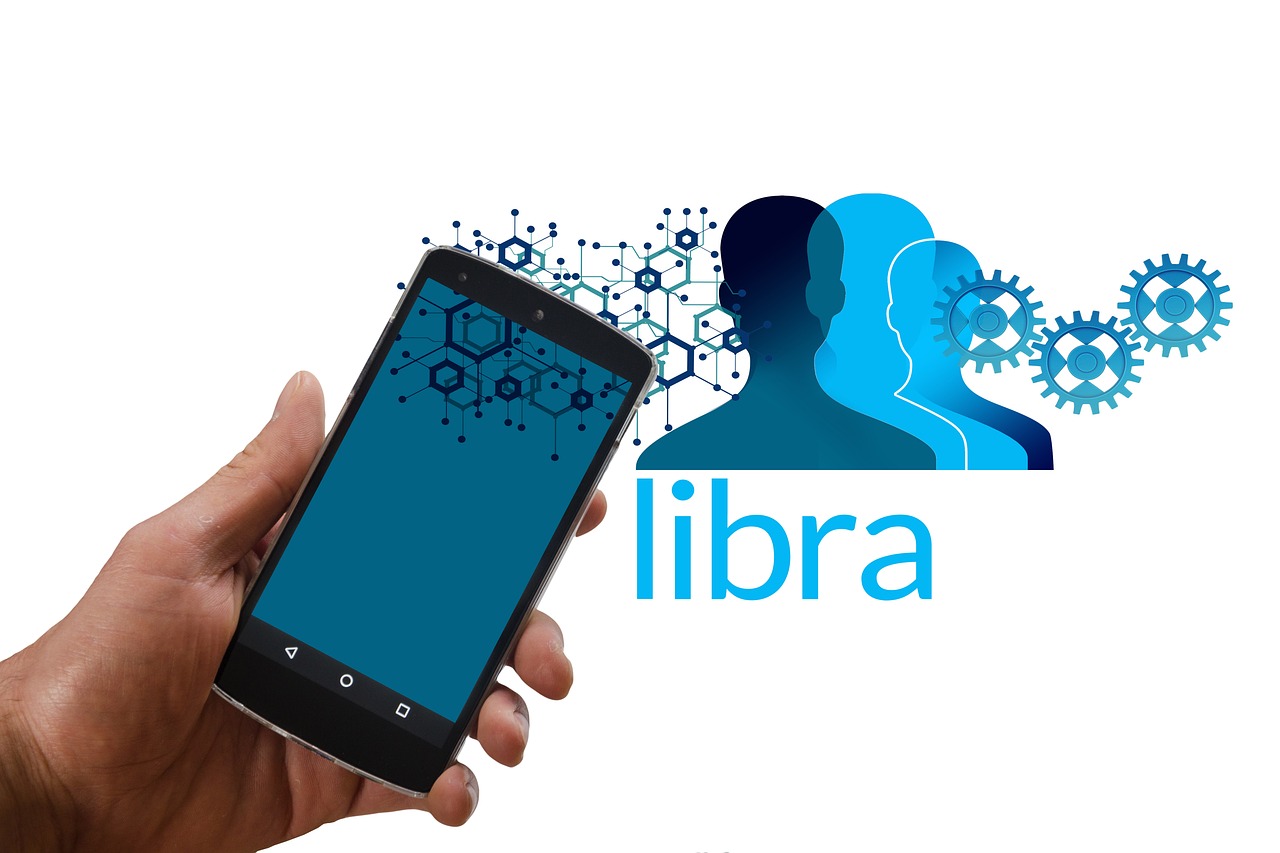How to Navigate the Blockchain Technology Landscape
In today's rapidly evolving digital world, blockchain technology stands out as a revolutionary force, reshaping how we think about trust, transparency, and transactions. But navigating this complex landscape can feel like wandering through a maze without a map. So, what exactly is blockchain, and why should you care? In this article, we will explore the essential aspects of understanding and engaging with blockchain technology, including its applications, challenges, and future trends that shape its evolution across various industries.
At its core, blockchain is a decentralized ledger system that records transactions across many computers so that the recorded transactions cannot be altered retroactively. This means that once data is added to the blockchain, it becomes nearly impossible to change or delete it. Imagine a digital notebook that everyone can see but no one can erase. This feature provides unparalleled transparency and security in transactions, making blockchain a game-changer for industries that rely on trust and verification.
Blockchain technology is not just a buzzword; it’s actively transforming various sectors. From finance to healthcare, the applications are vast and varied. Here are some key areas where blockchain is making a significant impact:
- Finance: Revolutionizing how we handle transactions and investments.
- Supply Chain Management: Enhancing transparency and traceability of goods.
- Healthcare: Securing patient data and improving care coordination.
- Digital Identity Verification: Empowering individuals with control over their personal information.
When it comes to finance, blockchain is like a breath of fresh air. It's revolutionizing the industry in ways we never thought possible. Think about cryptocurrencies, for instance. They are not just digital coins; they represent a new way of thinking about money. With blockchain, transactions are faster, cheaper, and more secure. Decentralized Finance (DeFi) is another exciting development, allowing users to engage in financial transactions without intermediaries. This not only enhances efficiency but also democratizes access to financial services.
The rise of cryptocurrencies has been nothing short of explosive. Bitcoin, Ethereum, and countless others have captured the public's imagination and, in many cases, their wallets. But what does this mean for traditional financial systems? Well, it’s like a tidal wave crashing onto the shore—some will adapt and thrive, while others may struggle to keep their heads above water. Cryptocurrencies are reshaping investment strategies, creating new opportunities, and challenging the status quo.
Now, let’s talk about smart contracts. These are self-executing contracts with the terms of the agreement directly written into code. Imagine a vending machine: you put in your money, select your snack, and the machine automatically delivers it. That’s how smart contracts work—they automate agreements and transactions, reducing the need for intermediaries and minimizing the risk of fraud. This innovation not only increases trust but also streamlines processes, making them faster and more efficient.
Supply chains are often complex and opaque, but blockchain technology is shining a light on this intricate web. By providing a transparent and immutable record of transactions, blockchain enhances traceability and accountability. Picture a scenario where you can track a product from its origin to your doorstep, verifying its authenticity at every step. This level of transparency can significantly reduce fraud and improve efficiency, benefiting both businesses and consumers alike.
Despite its potential, blockchain technology faces several hurdles that must be overcome for widespread adoption. These challenges include regulatory concerns, scalability issues, and the need for standardization across platforms. Understanding these obstacles is crucial for anyone looking to navigate the blockchain landscape effectively.
The legal landscape surrounding blockchain is complex and ever-changing. Different jurisdictions have different regulations, which can create confusion and uncertainty. For businesses looking to implement blockchain solutions, understanding these regulations is paramount. Failure to comply could lead to significant penalties and hinder growth.
As more users flock to blockchain networks, scalability becomes a pressing issue. Can these networks handle increased transaction volumes without sacrificing speed and security? This is a question that developers and stakeholders are actively trying to answer. Finding solutions to scalability challenges is essential for the technology’s future success.
Looking ahead, the future of blockchain technology is filled with potential. Innovations are on the horizon, and the integration of blockchain with other technologies, such as artificial intelligence and the Internet of Things, could lead to groundbreaking advancements. As digital economies continue to evolve, blockchain will undoubtedly play a pivotal role in shaping how we interact, transact, and trust one another in the digital realm.
Q: What is blockchain technology?
A: Blockchain is a decentralized ledger system that securely records transactions across multiple computers, ensuring transparency and immutability.
Q: How does blockchain benefit the finance industry?
A: Blockchain enhances efficiency, reduces costs, and increases security in financial transactions through innovations like cryptocurrencies and smart contracts.
Q: What challenges does blockchain face?
A: Key challenges include regulatory concerns, scalability issues, and the need for standardization across different platforms.
Q: What does the future hold for blockchain technology?
A: The future is promising, with potential innovations and integrations that could revolutionize various industries and digital economies.

Understanding Blockchain Basics
Blockchain technology is often described as a digital ledger that operates on a decentralized network, and while that sounds straightforward, the implications are profound. Imagine a book where every page is filled with transactions, and each page is linked to the one before it. This is essentially what a blockchain does, but instead of being housed in a single location, it exists across countless computers worldwide. This decentralized nature is what provides transparency and security in transactions, making it nearly impossible to alter any information without the consensus of the network.
At its core, a blockchain consists of three key components: blocks, nodes, and the network protocol. Each block contains a list of transactions, a timestamp, and a unique hash that links it to the previous block, creating an unbreakable chain. Nodes are the individual computers that maintain a copy of the entire blockchain, ensuring that the data is replicated and secure. The network protocol governs how these nodes communicate and validate transactions, ensuring that every participant adheres to the same rules.
One of the most exciting aspects of blockchain is its ability to provide a trustless environment. In traditional transactions, trust is established through intermediaries like banks or payment processors. However, blockchain eliminates the need for these middlemen by using cryptographic algorithms to validate transactions. This means that users can conduct transactions directly with one another, knowing that the system itself guarantees the integrity of the process. It’s like having a trusted friend vouch for you at every transaction, but instead, it’s the technology doing the heavy lifting.
Moreover, blockchain technology is not limited to cryptocurrencies. Its applications span various industries, from healthcare to supply chain management. For instance, in healthcare, patient records can be securely stored on a blockchain, allowing for easy access and sharing among authorized personnel while maintaining patient privacy. Similarly, in supply chain management, blockchain can track products from origin to consumer, providing transparency that helps combat fraud and ensures quality.
In summary, understanding the basics of blockchain technology is crucial for anyone looking to navigate this rapidly evolving landscape. Its decentralized nature, coupled with the ability to create a trustless environment, opens up a world of possibilities. As we delve deeper into the applications and challenges of blockchain, it becomes clear that this technology is not just a passing trend but a fundamental shift in how we think about transactions and data integrity.
- What is blockchain technology? Blockchain is a decentralized digital ledger that records transactions across many computers securely.
- How does blockchain ensure security? Blockchain uses cryptographic techniques to secure data and validate transactions, making it tamper-proof.
- What are the main components of a blockchain? The main components include blocks, nodes, and the network protocol.
- Can blockchain be used outside of cryptocurrencies? Yes, blockchain has applications in various sectors, including healthcare, finance, and supply chain management.

Key Applications of Blockchain
Blockchain technology is not just a buzzword; it's a transformative force that's reshaping various industries. As we dive into the key applications of blockchain, it's essential to understand that its decentralized nature offers unparalleled advantages in terms of transparency, security, and efficiency. From finance to healthcare, blockchain is making waves that are hard to ignore.
One of the most notable sectors where blockchain is making a significant impact is in finance. The rise of cryptocurrencies, like Bitcoin and Ethereum, has opened up new avenues for transactions and investments. Unlike traditional currencies, cryptocurrencies operate on a peer-to-peer network, eliminating the need for intermediaries. This not only reduces transaction fees but also speeds up the process. Imagine sending money across the globe in seconds, without the hefty charges imposed by banks. Now, that's the future!
In the financial sector, blockchain is revolutionizing the way we think about money. It’s not just about cryptocurrencies; it’s also about smart contracts and decentralized finance (DeFi). Smart contracts are self-executing contracts with the agreement directly written into code. This automation reduces the risk of fraud and increases trust among parties involved. Picture a vending machine: you put in your money, select your snack, and voilà! The machine automatically delivers your choice without any human intervention. That's the essence of smart contracts!
The rise of cryptocurrencies has been nothing short of explosive. These digital currencies are not just a trend; they represent a shift in how we view and use money. The market dynamics are fascinating, with new cryptocurrencies emerging almost daily, each with unique features and purposes. For instance, while Bitcoin is often viewed as "digital gold," Ethereum enables developers to build decentralized applications. This diversification in the cryptocurrency market is reshaping traditional financial systems and investment strategies.
Let’s delve deeper into smart contracts. These are essentially digital agreements that automatically execute when predetermined conditions are met. For example, if you were to rent an apartment using a smart contract, once you paid the rent, the contract would automatically grant you access to the property. This not only streamlines the process but also minimizes the potential for disputes. The potential applications are vast, ranging from real estate to insurance, making transactions smoother and more reliable.
Another area where blockchain shines is in supply chain management. The ability to track products from their origin to the consumer is crucial in today’s global economy. With blockchain, every transaction is recorded on a public ledger, providing complete transparency. For instance, if a food product is recalled due to contamination, blockchain allows companies to trace the product back to its source in real-time, ensuring consumer safety. This level of traceability not only enhances trust but also improves operational efficiency.
In summary, the applications of blockchain are vast and varied. From revolutionizing finance with cryptocurrencies and smart contracts to enhancing transparency in supply chains, the potential is enormous. As businesses and consumers alike begin to recognize the benefits, we can expect to see even greater adoption of this groundbreaking technology.
Q: What is blockchain technology?
A: Blockchain technology is a decentralized digital ledger that records transactions across multiple computers, ensuring that the record cannot be altered retroactively without the alteration of all subsequent blocks and the consensus of the network.
Q: How does blockchain ensure security?
A: Blockchain ensures security through cryptographic hashing, which makes it nearly impossible to alter transaction data without detection. Each block contains a unique hash of the previous block, creating a secure chain.
Q: What industries are using blockchain?
A: Blockchain is being utilized in various industries, including finance, healthcare, supply chain management, real estate, and digital identity verification, among others.
Q: What are smart contracts?
A: Smart contracts are self-executing contracts with the terms of the agreement directly written into code. They automate processes and reduce the risk of fraud by ensuring that transactions occur only when conditions are met.
Q: What challenges does blockchain face?
A: Some challenges include regulatory concerns, scalability issues, and the need for standardization across different blockchain platforms.

Blockchain in Finance
When we think about the financial industry, it's hard to ignore the **revolutionary impact** that blockchain technology has made. Imagine a world where **transactions happen in real-time**, without the need for intermediaries like banks or payment processors. Sounds like something out of a sci-fi movie, right? But this is the reality that blockchain has created, and it's changing the way we handle money, investments, and contracts.
At the heart of this transformation are **cryptocurrencies**. These digital currencies, such as Bitcoin and Ethereum, operate on blockchain technology, enabling peer-to-peer transactions without the need for a central authority. This not only **increases efficiency** but also **lowers transaction costs**. For instance, traditional cross-border payments can take days and incur hefty fees, while blockchain can facilitate these transactions in mere minutes and at a fraction of the cost. Can you imagine the savings for businesses and individuals alike?
But cryptocurrencies are just the tip of the iceberg. Enter **smart contracts**—self-executing contracts with the terms of the agreement directly written into code. These contracts automatically enforce and execute the terms once predetermined conditions are met, effectively eliminating the need for intermediaries and reducing the potential for fraud. For example, in real estate transactions, a smart contract could automatically transfer ownership of a property once payment is confirmed, ensuring a seamless and secure process.
To put it simply, blockchain in finance is like having a **trustworthy friend** who never forgets a promise and always keeps their word. This level of trust is invaluable in today’s fast-paced financial world, where every second counts and every dollar matters. Moreover, the rise of **decentralized finance (DeFi)** platforms has further amplified this trend. DeFi allows users to lend, borrow, and trade assets without the need for traditional banks, creating a more inclusive financial ecosystem.
However, it’s not all sunshine and rainbows. The integration of blockchain into finance does come with its challenges. Issues such as **regulatory compliance**, **security vulnerabilities**, and the need for **mass adoption** still loom large. As financial institutions grapple with these challenges, they must also consider how to balance innovation with risk management. It's a tightrope walk, but one that could lead to a **brighter financial future**.
In summary, blockchain technology is not just a passing trend; it’s a fundamental shift in how we perceive and interact with money. From cryptocurrencies to smart contracts and DeFi, the financial landscape is being reshaped in ways we are only beginning to understand. The question now is: are you ready to embrace this change?
- What is blockchain technology?
Blockchain is a decentralized digital ledger that records transactions across many computers, ensuring that the record cannot be altered retroactively.
- How do cryptocurrencies work?
Cryptocurrencies use blockchain technology to secure transactions, control the creation of additional units, and verify the transfer of assets.
- What are smart contracts?
Smart contracts are self-executing contracts with the terms of the agreement directly written into code, automatically enforcing and executing the terms once conditions are met.
- What is decentralized finance (DeFi)?
DeFi refers to financial services that use smart contracts on blockchains, allowing users to lend, borrow, and trade without traditional intermediaries.

Cryptocurrencies and Their Impact
Cryptocurrencies have emerged as a revolutionary force in the financial landscape, challenging traditional banking systems and reshaping how we perceive money. At their core, cryptocurrencies are digital or virtual currencies that use cryptography for security, making them nearly impossible to counterfeit or double-spend. This innovation is not just a fleeting trend; it represents a fundamental shift in the way we conduct transactions and store value.
One of the most significant impacts of cryptocurrencies is their ability to provide financial services to the unbanked and underbanked populations around the globe. Imagine a world where anyone with a smartphone can access financial services without needing a traditional bank account. This is the promise of cryptocurrencies. By utilizing blockchain technology, these digital currencies enable peer-to-peer transactions that bypass the need for intermediaries, such as banks or payment processors, thereby reducing costs and increasing accessibility.
Furthermore, cryptocurrencies have introduced a new asset class that has attracted investors and speculators alike. The volatility of cryptocurrencies like Bitcoin and Ethereum can be likened to the wild west of finance, where fortunes can be made or lost in the blink of an eye. Many investors view cryptocurrencies not just as currencies but as digital gold, a hedge against inflation and economic uncertainty. This perspective has led to an explosion of interest in cryptocurrency trading, with platforms emerging to facilitate buying, selling, and investing in these digital assets.
However, with great opportunity comes great risk. The cryptocurrency market is known for its extreme price fluctuations, which can be daunting for new investors. Additionally, the lack of regulation in many jurisdictions raises concerns about security, fraud, and market manipulation. For instance, high-profile hacks and scams have led to significant financial losses for individuals and institutions alike. In light of these challenges, it’s crucial for potential investors to conduct thorough research and understand the risks involved before diving into the cryptocurrency space.
To illustrate the impact of cryptocurrencies on traditional financial systems, let's consider some key points:
- Decentralization: Unlike traditional currencies that are regulated by central banks, cryptocurrencies operate on decentralized networks. This means that no single entity has control over the currency, promoting transparency and reducing the risk of corruption.
- Lower Transaction Costs: By eliminating intermediaries, cryptocurrencies can significantly reduce transaction fees, making them an attractive option for international remittances.
- Smart Contracts: Many cryptocurrencies, particularly those built on platforms like Ethereum, allow for the creation of smart contracts that automate and enforce agreements without the need for a middleman.
In summary, the impact of cryptocurrencies is profound and multifaceted. They are not just a technological innovation but a movement towards a more inclusive and decentralized financial system. As we continue to explore the potential of cryptocurrencies, we must also navigate the challenges they present to ensure a secure and sustainable future for this digital revolution.
1. What are cryptocurrencies?
Cryptocurrencies are digital or virtual currencies that use cryptography for security, enabling secure and decentralized transactions.
2. How do cryptocurrencies work?
Cryptocurrencies operate on blockchain technology, which is a decentralized ledger that records all transactions across a network of computers.
3. Are cryptocurrencies safe to invest in?
While cryptocurrencies offer opportunities for substantial returns, they also come with high risks due to market volatility and the potential for fraud. It's essential to do thorough research before investing.
4. Can I use cryptocurrencies for everyday purchases?
Yes, many businesses and online retailers accept cryptocurrencies as a form of payment, although adoption varies by region and industry.

Smart Contracts Explained
When we talk about smart contracts, we're diving into one of the most fascinating aspects of blockchain technology. Imagine a contract that executes itself when certain conditions are met, without the need for a middleman. Sounds like something out of a sci-fi movie, right? But this is the reality that smart contracts bring to the table. They're essentially self-executing contracts with the agreement directly written into code. This means that once the criteria set out in the contract are satisfied, the contract automatically enforces the terms. No fuss, no muss!
Think of smart contracts like a vending machine. You put in your money, select your snack, and voilà! The machine delivers your item without needing anyone to intervene. This analogy perfectly illustrates how smart contracts operate within the blockchain ecosystem. They are designed to facilitate, verify, or enforce the negotiation or performance of a contract, making transactions more efficient and reducing the risk of human error.
One of the most exciting features of smart contracts is their ability to enhance trust. Since they run on a decentralized blockchain, the terms are immutable and transparent. This means that once a smart contract is deployed, it cannot be changed or tampered with. This feature not only builds trust among parties involved but also significantly reduces the likelihood of fraud. Imagine the peace of mind knowing that your contract is safe from alterations!
In terms of applications, smart contracts can be utilized in various sectors. For instance, in real estate, they can automate the entire buying process—from the initial offer to the final sale—ensuring that all parties fulfill their obligations before the transaction is completed. This not only speeds up the process but also minimizes the need for extensive paperwork and legal fees.
However, it's essential to acknowledge that smart contracts are not without their challenges. For one, the code must be flawless; even a minor bug can lead to significant vulnerabilities. Moreover, the legal status of smart contracts is still a gray area in many jurisdictions. As we continue to explore this exciting technology, it becomes crucial to address these issues to unlock the full potential of smart contracts.
To summarize, smart contracts represent a groundbreaking innovation in the realm of blockchain technology. They not only streamline processes but also enhance security and trust in transactions. As industries begin to embrace this technology, we can expect to see even more creative applications that could revolutionize the way we conduct business. The future is indeed bright for smart contracts!
- What is a smart contract? A smart contract is a self-executing contract with the terms of the agreement directly written into code on a blockchain.
- How do smart contracts work? They automatically execute transactions when predefined conditions are met, ensuring trust and reducing the need for intermediaries.
- Where are smart contracts used? They are used in various sectors, including finance, real estate, supply chain management, and more.
- Are smart contracts secure? While they offer enhanced security due to their decentralized nature, flaws in the code can pose risks.
- What are the challenges of smart contracts? Key challenges include legal recognition, coding errors, and the need for standardization.

Blockchain in Supply Chain Management
In today's fast-paced world, the complexity of supply chains can be staggering. Imagine a vast web of suppliers, manufacturers, distributors, and retailers, all working together to deliver products to consumers. Now, throw in the challenges of transparency, trust, and traceability, and you have a recipe for chaos. This is where blockchain technology steps in as a game-changer. By providing a decentralized and immutable ledger, blockchain enhances visibility across the entire supply chain, ensuring that every participant has access to the same information in real-time.
One of the standout features of blockchain in supply chain management is its ability to improve traceability. For instance, if a food product is contaminated, blockchain allows companies to trace its origins back to the source, identifying the exact point of contamination. This capability not only helps in swift recall actions but also builds consumer trust. After all, who wouldn’t want to know where their food comes from? With blockchain, consumers can scan a QR code on their food packaging to view its entire journey from farm to table.
Moreover, blockchain technology can significantly reduce fraud and errors in supply chains. Traditional systems often rely on paper-based documentation, which is prone to human error and manipulation. By digitizing these records and storing them on a blockchain, companies can ensure that the data is accurate, secure, and easily accessible. This leads to improved efficiency and reduced operational costs. Imagine a world where invoices are automatically matched with deliveries through smart contracts, eliminating disputes and speeding up payment processes. Sounds like a dream, right? Well, that dream is becoming a reality.
Another fascinating aspect of blockchain in supply chain management is its potential for collaboration. With all parties working off the same ledger, businesses can foster a more cooperative environment. Instead of competing for information, organizations can share insights and data, leading to enhanced decision-making. This collaboration can extend to various stakeholders, including suppliers, logistics providers, and even customers. For example, a manufacturer can work closely with suppliers to forecast demand and optimize inventory levels, thereby reducing waste and increasing responsiveness to market changes.
To illustrate the impact of blockchain in supply chain management, consider the following table that highlights some key benefits:
| Benefit | Description |
|---|---|
| Transparency | All parties have access to the same data, enhancing trust and accountability. |
| Traceability | Ability to track products throughout their lifecycle, from origin to consumer. |
| Fraud Reduction | Immutable records reduce the risk of tampering and errors. |
| Efficiency | Automated processes through smart contracts streamline operations. |
| Collaboration | Encourages sharing of information among stakeholders for better decision-making. |
In conclusion, the implementation of blockchain technology in supply chain management is not just a passing trend; it's a fundamental shift towards more efficient, transparent, and trustworthy systems. As more businesses recognize the potential benefits, we can expect to see a ripple effect across various industries, ultimately transforming how goods are produced, tracked, and delivered. So, the next time you think about supply chains, remember that blockchain is paving the way for a smarter and more connected future.
- What is blockchain technology? Blockchain is a decentralized digital ledger that records transactions across multiple computers, ensuring that the data cannot be altered retroactively.
- How does blockchain improve supply chain management? By providing transparency, traceability, and security, blockchain enhances trust among participants and streamlines operations.
- Are there any challenges to implementing blockchain in supply chains? Yes, challenges include regulatory concerns, scalability issues, and the need for standardization across platforms.

Challenges Facing Blockchain Adoption
As we dive deeper into the world of blockchain technology, it’s essential to acknowledge the challenges that stand in the way of its widespread adoption. While blockchain holds great promise, it’s not without its hurdles. Many organizations are eager to harness its potential, but they often find themselves navigating a complex landscape filled with obstacles. Understanding these challenges is crucial for anyone looking to invest in or implement blockchain solutions.
One of the most significant issues is the regulatory landscape. Governments around the world are still figuring out how to regulate blockchain technology and cryptocurrencies. This uncertainty can lead to hesitation among businesses, as they fear potential legal repercussions. For instance, in some jurisdictions, the lack of clear regulations can create a gray area that stifles innovation. Companies may hesitate to invest in blockchain solutions if they are unsure of the compliance requirements they must meet.
In addition to regulatory concerns, scalability is another major challenge. As more users join blockchain networks, the demand for faster transaction processing speeds increases. However, many existing blockchain platforms struggle to handle a high volume of transactions without sacrificing performance. This is akin to a busy highway during rush hour—if too many cars are on the road, traffic slows down, and frustration ensues. If blockchain technology is to be adopted on a larger scale, developers must find ways to improve the efficiency and speed of these networks.
Moreover, there is a pressing need for standardization across different blockchain platforms. Currently, there are numerous blockchain frameworks, each with its own protocols and governance models. This lack of uniformity can lead to interoperability issues, making it difficult for different systems to communicate with one another. Imagine trying to send a message from one app to another that doesn’t speak the same language; it just won’t work. For blockchain to reach its full potential, a common set of standards must be established to facilitate collaboration and integration.
Another challenge that businesses face is the high initial investment required to implement blockchain technology. While the long-term benefits can be substantial, the upfront costs associated with integrating blockchain into existing systems can be a significant barrier for many organizations, especially small and medium-sized enterprises. These businesses may find it challenging to allocate a budget for technology that is still perceived as experimental.
Lastly, there’s a general lack of awareness and understanding of blockchain among key stakeholders. Many decision-makers are still unfamiliar with how blockchain works and its potential applications. This knowledge gap can lead to skepticism and reluctance to invest in blockchain initiatives. Education and awareness campaigns are vital to bridge this gap and help organizations understand the transformative potential of blockchain technology.
In summary, while blockchain technology has the potential to revolutionize various industries, it is essential to address the challenges that hinder its adoption. By tackling regulatory issues, improving scalability, establishing standards, managing costs, and enhancing awareness, we can pave the way for a more seamless integration of blockchain into our daily lives.
- What are the main challenges to blockchain adoption?
Regulatory uncertainty, scalability issues, lack of standardization, high initial investment costs, and limited awareness are some of the key challenges. - How can businesses overcome these challenges?
By staying informed about regulations, investing in scalable solutions, advocating for standardization, and educating stakeholders about blockchain technology. - Is blockchain technology only for large corporations?
No, while large corporations may have the resources to implement blockchain, smaller businesses can also benefit from its applications, especially with the rise of affordable solutions.

Regulatory and Compliance Issues
As blockchain technology continues to evolve and permeate various sectors, one of the most pressing challenges it faces is the regulatory landscape. Governments around the world are grappling with how to classify and regulate blockchain and its applications. This inconsistency can create a confusing environment for businesses looking to adopt this innovative technology. For instance, while some countries have embraced blockchain wholeheartedly, others have imposed strict regulations or outright bans, leading to a fragmented global market.
One of the primary concerns is the lack of clear regulations that can hinder innovation. Companies often find themselves navigating a maze of compliance requirements that vary not just from country to country, but sometimes even within regions of the same country. This inconsistency can lead to significant legal risks and uncertainties, making it challenging for businesses to invest in blockchain projects confidently.
Moreover, the nature of blockchain—being decentralized and often anonymous—poses unique challenges for regulators. Traditional financial regulations are built around centralized entities that can be held accountable, whereas blockchain networks operate on a peer-to-peer basis. This raises questions about who is responsible when something goes wrong. For example, if a smart contract fails or a cryptocurrency exchange is hacked, who can be held liable? This ambiguity complicates the regulatory framework significantly.
In addition, compliance with existing financial regulations, such as Know Your Customer (KYC) and Anti-Money Laundering (AML) laws, is another hurdle. Many blockchain projects, especially those involving cryptocurrencies, must find ways to implement these regulations without compromising the core principles of decentralization and privacy that blockchain technology champions. This often leads to a delicate balancing act between adhering to compliance and maintaining user trust.
To help clarify some of these issues, let’s look at a few key regulatory challenges that businesses in the blockchain space are currently facing:
- Inconsistency in Regulations: Different countries have different approaches to blockchain, ranging from supportive to restrictive.
- Accountability Issues: The decentralized nature of blockchain makes it difficult to pinpoint liability in cases of fraud or failure.
- Compliance with Financial Regulations: Ensuring adherence to KYC and AML laws while promoting user privacy is a complex challenge.
As we look ahead, it’s clear that a more unified approach to blockchain regulation is necessary. This could involve international cooperation to create standards that promote innovation while ensuring consumer protection and security. Without such measures, the potential of blockchain technology may be stifled by regulatory uncertainty.
In conclusion, while blockchain holds immense promise for transforming industries, navigating the regulatory and compliance landscape remains a significant challenge. Stakeholders must engage in ongoing dialogue with regulators to shape a framework that fosters innovation while safeguarding public interests. Only then can we unlock the full potential of this groundbreaking technology.
- What are the main regulatory challenges facing blockchain technology? The main challenges include inconsistency in regulations across different countries, accountability issues due to decentralization, and compliance with existing financial regulations.
- How does blockchain technology impact compliance? Blockchain’s decentralized nature complicates traditional compliance measures like KYC and AML, as it can be difficult to identify and hold accountable parties involved in transactions.
- What steps can be taken to improve blockchain regulation? International cooperation and dialogue between stakeholders and regulators can help create a unified regulatory framework that promotes innovation while ensuring security and consumer protection.

Scalability and Performance Concerns
As the blockchain landscape continues to evolve, one of the most pressing issues that developers and businesses face is scalability. Imagine trying to fit a growing crowd into a small room; eventually, it becomes overcrowded, leading to chaos and inefficiency. Similarly, as more users and transactions flood into blockchain networks, the existing infrastructure can struggle to keep up. Scalability refers to the capability of a blockchain network to handle an increasing amount of transactions efficiently without compromising performance. This challenge is critical, particularly for public blockchains, which are designed to be open and accessible to anyone.
One of the primary factors contributing to scalability issues is the block size limit. Each block in a blockchain contains a certain number of transactions, and when this limit is reached, new transactions must wait for the next block to be mined. This can lead to delays and increased transaction fees, much like a traffic jam during rush hour. To illustrate this, consider the Bitcoin network, which can handle approximately seven transactions per second, a stark contrast to traditional payment systems like Visa, which can process thousands of transactions per second. The difference is significant and highlights the urgency of addressing scalability.
Moreover, scalability is not just about increasing transaction throughput; it’s also about maintaining the decentralized nature of the blockchain. Many proposed solutions, such as increasing block sizes or reducing the time between blocks, can inadvertently lead to centralization. When fewer nodes can participate in the validation process due to increased hardware requirements, the core principle of blockchain—decentralization—can be compromised. This is a delicate balance to strike, akin to walking a tightrope; one misstep can lead to significant consequences.
To tackle scalability challenges, several innovative solutions have emerged. These include:
- Layer 2 Solutions: Technologies like the Lightning Network for Bitcoin and Plasma for Ethereum aim to process transactions off the main blockchain, thereby reducing congestion and increasing speed.
- Sharding: This technique involves splitting the blockchain into smaller, more manageable pieces called shards. Each shard can process transactions independently, which can significantly enhance performance.
- Consensus Mechanisms: Transitioning from energy-intensive proof-of-work (PoW) to more efficient mechanisms like proof-of-stake (PoS) can reduce the computational load and increase transaction speeds.
However, while these solutions show promise, they come with their own set of challenges and trade-offs. For instance, Layer 2 solutions may introduce additional complexity, while sharding can complicate data consistency across the network. As the blockchain community continues to innovate, the goal remains clear: to create a system that not only scales effectively but also preserves the fundamental values of transparency, security, and decentralization.
In conclusion, scalability and performance concerns are at the forefront of blockchain technology discussions. As the digital landscape grows, the ability to process transactions efficiently without sacrificing the core principles of blockchain will be vital for its mainstream adoption. Addressing these challenges will require collaboration among developers, regulators, and users to ensure a robust and scalable future for blockchain technology.
Q1: What is blockchain scalability?
A1: Blockchain scalability refers to the ability of a blockchain network to handle an increasing number of transactions efficiently without compromising performance.
Q2: Why is scalability important for blockchain?
A2: Scalability is crucial because as more users and transactions enter the network, it must be able to process them without delays or increased costs, ensuring a smooth user experience.
Q3: What are some solutions to blockchain scalability issues?
A3: Solutions include Layer 2 technologies, sharding, and alternative consensus mechanisms like proof-of-stake.
Q4: Can scalability affect decentralization?
A4: Yes, some scalability solutions can lead to centralization if they require more resources than smaller nodes can provide, potentially undermining the decentralized nature of blockchain.

The Future of Blockchain Technology
The future of blockchain technology is as bright as a supernova, bursting with potential and promise. As we stand on the brink of a digital revolution, blockchain is poised to transform not only how we conduct transactions but also how we interact with technology on a fundamental level. Imagine a world where everything from your financial records to your medical history is securely stored and easily accessible, without the need for intermediaries. This vision is rapidly becoming a reality, thanks to the ongoing innovations in blockchain.
One of the most exciting trends on the horizon is the integration of blockchain with other emerging technologies such as artificial intelligence (AI), the Internet of Things (IoT), and even quantum computing. By combining these technologies, we can create systems that are not only more efficient but also smarter. For instance, smart contracts could be enhanced with AI capabilities, allowing them to learn from past transactions and adapt to changing conditions. This would lead to even greater trust and reliability in automated agreements.
Moreover, as businesses and governments recognize the potential of blockchain, we can expect to see more widespread adoption across various sectors. Industries like healthcare, real estate, and even voting systems are beginning to explore how blockchain can enhance transparency and security. Imagine a healthcare system where your medical records are securely stored on a blockchain, accessible only to authorized personnel, ensuring your privacy while improving care coordination.
However, with great potential comes great responsibility. As blockchain technology evolves, so too must the frameworks that govern it. Regulatory bodies will need to adapt and create guidelines that protect consumers while fostering innovation. This balance is crucial, as overly stringent regulations could stifle creativity and slow down progress in this dynamic field.
Additionally, scalability remains a hot topic in blockchain discussions. As more users and applications join the network, maintaining speed and efficiency will be paramount. Solutions like sharding, layer-2 protocols, and innovative consensus mechanisms are being developed to address these challenges. Think of it like a busy highway: if too many cars are on the road, traffic slows down. We need to find ways to keep the flow smooth while accommodating more vehicles.
In conclusion, the future of blockchain technology is not just about financial transactions; it’s about creating a more transparent, secure, and efficient world. As we continue to explore its capabilities, the possibilities are endless. The journey is just beginning, and those who embrace this technology will be at the forefront of the next digital age.
- What industries will benefit most from blockchain technology? Blockchain has the potential to revolutionize various sectors, including finance, healthcare, supply chain management, and voting systems.
- How does blockchain ensure security? Blockchain uses cryptographic techniques and decentralized networks to secure data, making it difficult for unauthorized users to alter or access information.
- What are smart contracts? Smart contracts are self-executing contracts with the terms of the agreement directly written into code, allowing for automated and secure transactions.
- What challenges does blockchain face? Key challenges include regulatory hurdles, scalability issues, and the need for standardization across platforms.
Frequently Asked Questions
- What is blockchain technology?
Blockchain technology is a decentralized digital ledger that records transactions across many computers in a way that the registered transactions cannot be altered retroactively. This ensures transparency and security, making it a revolutionary approach for various industries.
- How does blockchain work?
Blockchain works by creating a chain of blocks, each containing a list of transactions. Once a block is filled with data, it is added to the chain in a linear, chronological order. Each block is linked to the previous one, making it nearly impossible to change any information without altering all subsequent blocks.
- What are the key applications of blockchain?
Blockchain has numerous applications across various sectors, including:
- Finance: Facilitating cryptocurrencies and decentralized finance (DeFi).
- Supply Chain Management: Enhancing transparency and traceability.
- Healthcare: Securing patient data and improving medical records management.
- Digital Identity Verification: Providing secure and verifiable identities.
- What are cryptocurrencies?
Cryptocurrencies are digital or virtual currencies that use cryptography for security. They operate on blockchain technology, allowing for secure and anonymous transactions. Bitcoin, Ethereum, and Ripple are some of the most well-known cryptocurrencies.
- What are smart contracts?
Smart contracts are self-executing contracts with the terms of the agreement directly written into code. They automatically enforce and execute contractual agreements when predetermined conditions are met, reducing the need for intermediaries and increasing trust.
- What challenges does blockchain face?
Blockchain technology faces several challenges, including:
- Regulatory Concerns: Different jurisdictions have varying regulations that can hinder adoption.
- Scalability Issues: Many blockchain networks struggle to handle a high volume of transactions quickly.
- Standardization Needs: The lack of universal standards can create interoperability problems.
- What is the future of blockchain technology?
The future of blockchain technology looks promising, with potential innovations on the horizon. We can expect greater integration with other technologies like AI and IoT, as well as advancements that could enhance its scalability and efficiency, ultimately shaping digital economies.



















